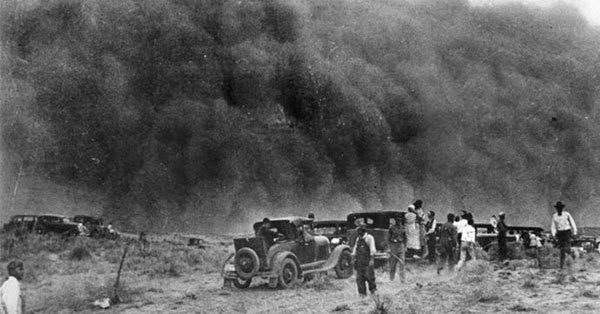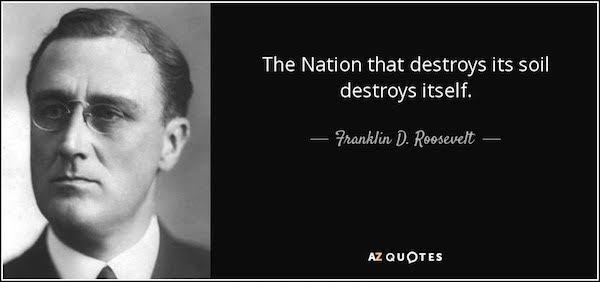On this day in 1933, the first giant dust storm, dubbed “The Great Black Blizzard” began rolling across the Great Plains. Most Americans are familiar with the Dust Bowl era of the 1930s, but the story of how we got there is rather interesting. It really begins back in the ealry-1800s when explorer and map-maker Stephen Long labeled everything west of the 100th meridian as “the Great American Desert”. This “label” kept farming settlements beyond the Mississippi River from growing for several decades. That is until the government gave away land in 1862 with the passing of the Homestead Act.
Interestingly, as settlers began pushing to the Great Plains, rains also returned to the area increasing soil moisture levels. Some people suggested that the iron on the railroad lines or the wires of the telegraph lines were responsible for bringing more rain. Others thought it was the disturbance of the atmospheric circulation via all the new movements in the area. But one man, Samuel Aughey, a prominent Nebraska natural scientist, reasoned that more settlers turning over more acres of soil was leading to ever more rainfall, and drought on the Great Plains would never be a problem as long as farmers continued to plant and harvest crops. The prairie soil would, according to M. Jean Ferrill in Encyclopedia of the Great Plains, “absorb the rain like a huge sponge once the sod had been broken. This moisture would then be slowly given back to the atmosphere by evaporation, and each year, as cultivation extended across the Plains, the moisture and rainfall would also increase until the region was fit for agriculture without irrigation.”
Journalist and author Charles Dana Wilber picked up on Aughey’s theory and included it in his 1881 book The Great Valleys and Prairies of Nebraska and the Northwest. It was Wilber, in fact, who coined and popularized the phrase “rain follows the plow,” which made Aughey’s bizarre theory more easily accessible to the public by breaking it down to a single phrase, “God speed the plow, and it was by this wonderful provision, which is only man’s mastery over nature, the clouds are dispensing copious rains, making the plow the instrument that separates civilization from savagery and converts a desert into a farm or garden.” Soon thereafter, in the 1890s, the Great Plains endured severe droughts and today the theory that “rain follows the plow” is considered junk science.
We all recognize that our technologies and sciences have advanced a great daly from the Dust Bowl days as the world now focuses on climate change, clean energy, and sustainable farming. There is no debating the fact we are being pushed and driven to “greener” production practices not only to hold the soil in place but for many additional perceived benefits, it’s more and more apparent that becoming an expert on your soil health will be the currency of the day. Source: (homesteadcongress.blogspot, nps.gov)










